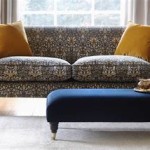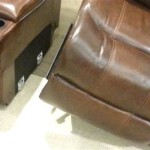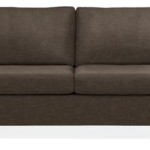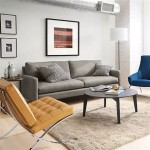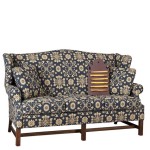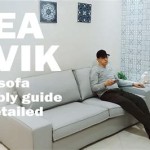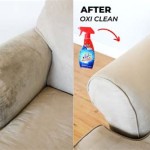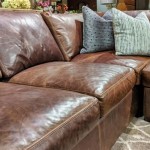Which Material Is Best For Sofa Cushions?
Selecting the best material for sofa cushions is a crucial decision that significantly impacts the comfort, durability, and aesthetic appeal of furniture. The ideal choice depends on a variety of factors, including budget, lifestyle, desired level of maintenance, and personal preferences regarding firmness and feel. This article explores the common types of materials used in sofa cushions, outlining their advantages and disadvantages to assist in making an informed decision.
Sofa cushions generally comprise two main components: the filling (the inner core that provides support and cushioning) and the fabric (the outer covering that determines the look and feel). Each component plays a vital role in the overall comfort and longevity of the sofa. Failing to consider both elements can lead to dissatisfaction with the furniture's performance over time.
The filling material is responsible for providing support, resilience, and softness. Common filling options include foam, down, feathers, fiberfill, and various combinations thereof. The choice of filling material determines the cushion's ability to bounce back after use, its susceptibility to compression over time, and its overall comfort level. Similarly, the fabric used for the cushion cover impacts its durability, resistance to stains and fading, and textural feel. The interplay between filling and fabric determines the overall performance of the sofa cushion.
Foam Fillings: Versatility and Support
Foam is one of the most widely used materials for sofa cushion fillings due to its versatility, affordability, and relative ease of maintenance. There are several types of foam used in cushions, each with varying densities and properties.
Polyurethane foam is the most common type of foam, offering a balance between affordability and durability. It is available in a range of densities, with higher densities generally providing greater support and longevity. Lower-density polyurethane foam tends to break down more quickly and lose its shape over time.
High-density polyurethane foam is a more durable and supportive option, often used in higher-quality sofas. It provides better resistance to compression and retains its shape longer than lower-density foam. This makes it a suitable choice for cushions in frequently used furniture.
Memory foam, also known as viscoelastic foam, conforms to the body's shape, providing personalized support and pressure relief. It is known for its ability to distribute weight evenly, making it a comfortable option for those seeking optimal support. However, memory foam can retain heat, which may be a concern for some individuals. It also tends to be more expensive than polyurethane foam.
Latex foam is a natural or synthetic rubber-based foam known for its durability, resilience, and breathability. Natural latex foam is derived from the sap of rubber trees, making it an environmentally friendly option. Latex foam is naturally hypoallergenic and resistant to dust mites, making it a suitable choice for individuals with allergies. However, latex foam can be relatively expensive compared to other foam types.
The advantages of foam fillings include their relatively low cost, ease of availability, and diverse range of densities and properties to suit different preferences. Foam cushions generally require minimal maintenance and retain their shape reasonably well. However, foam can be susceptible to compression over time, particularly lower-density foams. It is also essential to ensure that the foam is fire-retardant and meets safety standards.
Down and Feather Fillings: Luxury and Softness
Down and feather fillings are known for their luxurious feel and exceptional softness. These fillings are derived from the plumage of ducks and geese, with down being the soft, fluffy undercoating and feathers being the larger, more structured outer feathers.
Down fillings provide unparalleled softness and insulation, making them a popular choice for high-end sofas. Down cushions conform to the body's shape, providing a comfortable and enveloping feel. However, down fillings require regular fluffing to maintain their shape and prevent clumping. They also tend to be more expensive than foam fillings.
Feather fillings offer a more structured support compared to down, but they can also be less resilient and more prone to poking through the cushion cover. Feather cushions require frequent fluffing to maintain their shape and prevent feather migration. The quills of the feathers can sometimes be felt through the fabric, which may be uncomfortable for some individuals. To mitigate this, feather fillings are often combined with down to provide a balance of support and softness.
The advantages of down and feather fillings include their exceptional softness, luxurious feel, and natural breathability. However, they require more maintenance than foam fillings and tend to be more expensive. They are also not suitable for individuals with allergies to feathers or down. Down and feather fillings typically require a down-proof ticking fabric to prevent the feathers from escaping.
A common composition blends down and feathers in varying ratios. A higher percentage of down results in a softer, plusher feel, while a higher percentage of feathers provides more support. The appropriate ratio depends on the desired balance of comfort and structure. Additionally, "blown" fiber can be injected into down and feather filled cushions to create a more resistant and lofty filling.
Fiberfill Fillings: Affordability and Hypoallergenic Properties
Fiberfill, also known as polyester fiberfill, is a synthetic material made from polyester fibers. It is a popular choice for sofa cushion fillings due to its affordability, hypoallergenic properties, and ease of maintenance.
Fiberfill cushions are relatively inexpensive compared to foam, down, and feather fillings. They are also lightweight and easy to clean. Fiberfill is resistant to dust mites and mildew, making it a suitable choice for individuals with allergies. However, fiberfill tends to flatten and lose its shape over time, requiring frequent fluffing to maintain its loft.
There are different types of fiberfill, including loose fiberfill and batting. Loose fiberfill consists of individual fibers that can be easily manipulated to create a desired shape and density. Batting is a sheet of fiberfill that is often used as a cushion wrap to provide additional cushioning and support.
The advantages of fiberfill fillings include their affordability, hypoallergenic properties, and ease of maintenance. However, they are less durable than foam, down, and feather fillings and tend to flatten over time. Fiberfill cushions typically require more frequent replacement than other types of fillings.
The quality of the fiberfill also plays a role in its performance. Higher-quality fiberfill is more resilient and retains its shape longer than lower-quality fiberfill. It is also essential to choose a fiberfill that is appropriate for the intended use. For example, a firmer fiberfill may be more suitable for back cushions, while a softer fiberfill may be more suitable for seat cushions.
In addition to the filling material, the fabric used for the cushion cover is also a critical consideration. The fabric impacts the cushion's durability, resistance to stains and fading, and overall aesthetic appeal. Common fabric options include cotton, linen, polyester, and blends thereof.
Cotton is a natural fiber that is breathable, comfortable, and relatively inexpensive. However, cotton is susceptible to stains and fading and may require regular cleaning. Linen is another natural fiber that is known for its durability and luxurious feel. Linen is more resistant to stains and fading than cotton but can be more expensive.
Polyester is a synthetic fiber that is durable, stain-resistant, and fade-resistant. Polyester is also relatively inexpensive and easy to care for. However, polyester is not as breathable as natural fibers like cotton and linen.
Blended fabrics, such as cotton-polyester blends, offer a combination of the benefits of both natural and synthetic fibers. These fabrics are typically more durable and stain-resistant than cotton alone but are more breathable than polyester alone.
Ultimately, the best material for sofa cushions depends on individual needs and preferences. While foam cushions offer versatility and support, down and feather cushions provide luxurious softness. Fiberfill cushions offer affordability and hypoallergenic properties. The choice of fabric also plays a crucial role in the cushion's overall performance and aesthetic appeal.

Tips A Test To Help You Choose The Right Sofa Cushion Material
Your Guide To Choosing The Right Cushion Filling Dfs

10 Best Sofa Material Types That Are Perfect For Every N Home

Best Fabrics For Sofas The Inside

The Best Foam To Use For Sofa Cushions Good Better

Tips A Test To Help You Choose The Right Sofa Cushion Material

Types Of Pillow Stuffing What S The Best Stated Home Blog

Fabric Guide For Throw Cushions Simply

Down Vs Foam Sofa Cushions Circle Furniture

The Best Foam To Use For Sofa Cushions Good Better
Related Posts

